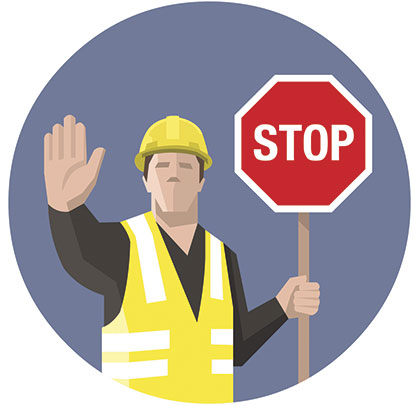If you receive an OSHA citation, you need to make a decision relatively quickly on how to respond. One option is to immediately request an “informal conference” with OSHA. The informal conference must take place within 15 business days of your receipt of the citation. Informal conferences are popular because they present an opportunity at an early stage of the process to negotiate a penalty reduction, extension of abatement dates, and/or withdrawal, amendment, or reclassification of the violations. However, what if you are unsatisfied with the outcome of the informal conference? This article will address the process of taking the next step and formally contesting an OSHA citation.
CONTESTING A CITATION
The act of contesting an OSHA citation is relatively easy. You simply need to submit a Notice of Contest in writing to the OSHA area director. The Notice of Contest must state what you are contesting (e.g., that the cited regulation applies and/or was violated, the proposed penalty amount(s), the abatement deadline, and/or the classification of the violation). You do not need to set forth all of your arguments in the Notice of Contest—in fact, merely stating that you are contesting “all aspects” of the Citation may be sufficient. A proper contest made in good faith will suspend your legal obligation to abate and pay any proposed penalties until the item contested has been resolved. Also, very importantly, once you contest, you will still have the ability to enter into a settlement with OSHA.
The decision to contest a citation should never be made lightly and many factors may be relevant to the decision-making process. These may include not just the proposed penalty amounts but perhaps, more importantly, the citation’s potential impact on future civil litigation (and potential civil liability), the potential for “repeat” violations in the future, your reputation within your particular industry and the potential for future lost business, and, finally, the costs associated with abatement—for example, will abatement require that entire processes be changed, at significant expense? Notably, the maximum penalty for a “serious” violation is $12,675, but the maximum for a “repeat” is $126,749—ten times higher. As a result, treating an initial “serious” violation as simply a cost of doing business and paying the citation notwithstanding the existence of good faith defenses could bring trouble later because any future citation for the same or substantially similar regulation in the next 5 years could lead to six figures in proposed penalties (for a “repeat” violation).
REVIEW COMMISSION
The Occupational Safety and Health Review Commission (the “Commission”)—an independent federal agency, separate and apart from the Department of Labor/OSHA—serves as the court system to adjudicate disputes between employers and OSHA arising from contested workplace safety inspections. Among its roles, the Commission employs administrative law judges (ALJs) who hold administrative hearings and decide contested citations. If you contest a citation, you will end up before an ALJ. The ALJ will impose a schedule for the case, and also may hold a conference with the parties to clarify the issues, explore the potential of settlement, or discuss other ways to expedite the future hearing.
Discovery (the method by which parties obtain information and documents from each other) may include interrogatories, depositions, and requests for the opposing party to produce documents. Experts may also be retained to provide testimony and opinions on any dispositive issues. After discovery is completed, a hearing will be conducted before the ALJ. If you receive an adverse decision, there are even further ways by which to challenge the decision and underlying citation.
CONCLUSION
As the above establishes, a well-defined process exists to allow employers their day in court, beyond simply appearing for an informal conference. As a result, it is critical that employers consider their options before simply reaching for their checkbook to pay a citation.

About the Author:
Michael Rubin is a partner in the law firm Goldberg Segalla, where he serves as chair of the OSHA and Worksite Safety Practice Group. Michael has counseled clients across multiple industries regarding the defense and management of OSHA inspections and citations. He has on-the-ground experience conducting accident investigations and represents companies at all stages of OSHA enforcement proceedings. He frequently provides safety and risk-avoidance workshops on best practices for minimizing OSHA liability. He can be reached at 716.844.3477 or mrubin@goldbergsegalla.com.
_________________________________________________________________________
Modern Contractor Solutions, December 2017
Did you enjoy this article?
Subscribe to the FREE Digital Edition of Modern Contractor Solutions magazine.



